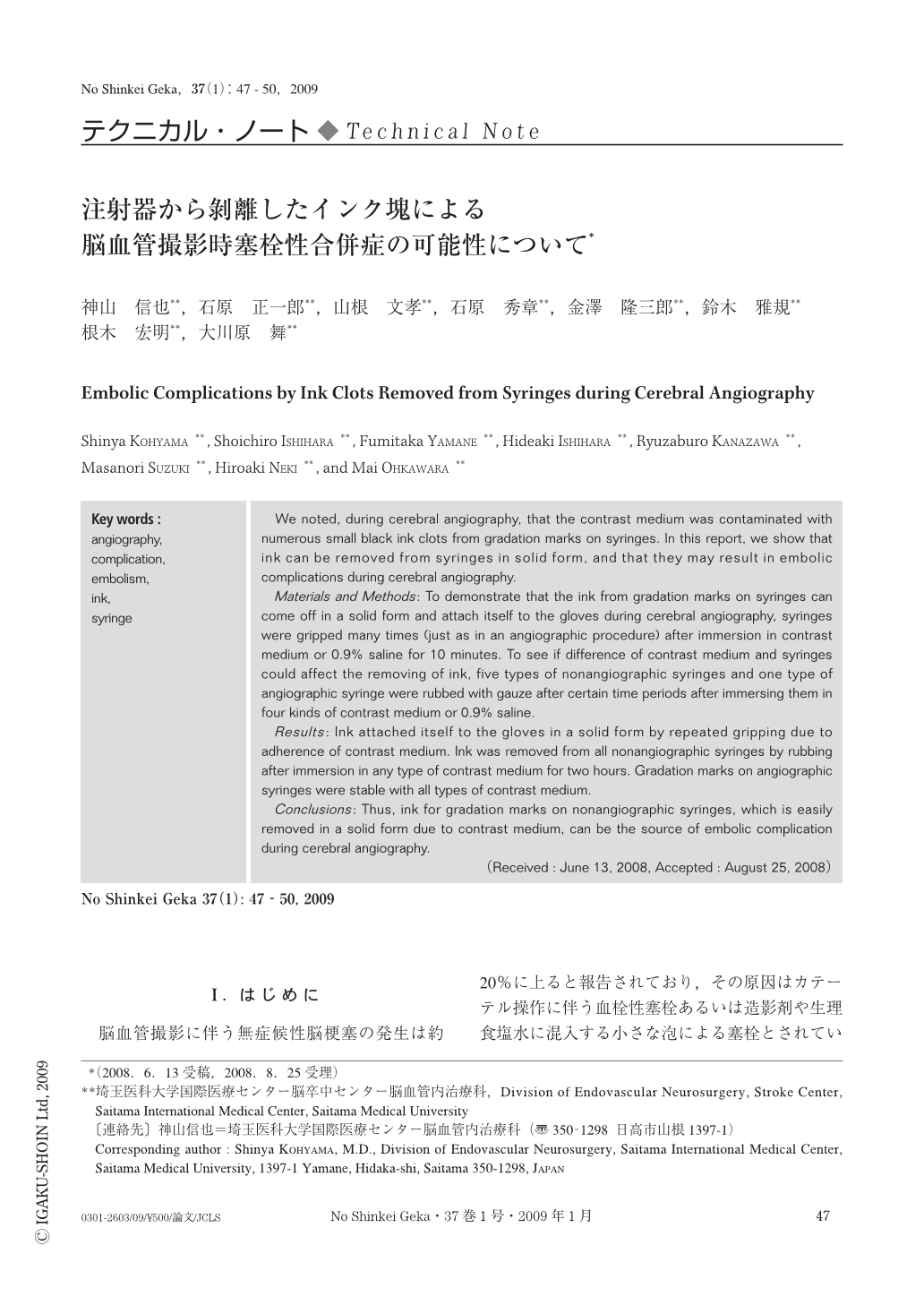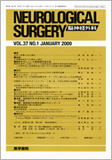Japanese
English
- 有料閲覧
- Abstract 文献概要
- 1ページ目 Look Inside
- 参考文献 Reference
Ⅰ.はじめに
脳血管撮影に伴う無症候性脳梗塞の発生は約20%に上ると報告されており,その原因はカテーテル操作に伴う血栓性塞栓あるいは造影剤や生理食塩水に混入する小さな泡による塞栓とされている1-3).そして実際,それ以外に脳血管撮影時に血管内に混入して塞栓を起因しうる異物はなさそうである.しかしながらわれわれは,血管撮影時に造影剤を入れた容器内に無数の小さな黒い塊が浮遊しているというできごとを経験した.この黒い塊は,造影剤の容器内に置かれていた注射器から目盛部分のインク塊が剝離したものであることが判明した.この経験から,注射器の目盛部分のインクは脳血管撮影時に無症候性塞栓を起因している可能性があると考え,今回造影剤および注射器の種類によるインク剝離の違いを調べ,注射器のインクが塞栓性合併症の原因となる可能性につき検討した.
We noted, during cerebral angiography, that the contrast medium was contaminated with numerous small black ink clots from gradation marks on syringes. In this report, we show that ink can be removed from syringes in solid form, and that they may result in embolic complications during cerebral angiography.
Materials and Methods: To demonstrate that the ink from gradation marks on syringes can come off in a solid form and attach itself to the gloves during cerebral angiography, syringes were gripped many times (just as in an angiographic procedure) after immersion in contrast medium or 0.9% saline for 10 minutes. To see if difference of contrast medium and syringes could affect the removing of ink, five types of nonangiographic syringes and one type of angiographic syringe were rubbed with gauze after certain time periods after immersing them in four kinds of contrast medium or 0.9% saline.
Results: Ink attached itself to the gloves in a solid form by repeated gripping due to adherence of contrast medium. Ink was removed from all nonangiographic syringes by rubbing after immersion in any type of contrast medium for two hours. Gradation marks on angiographic syringes were stable with all types of contrast medium.
Conclusions: Thus, ink for gradation marks on nonangiographic syringes, which is easily removed in a solid form due to contrast medium, can be the source of embolic complication during cerebral angiography.

Copyright © 2009, Igaku-Shoin Ltd. All rights reserved.


